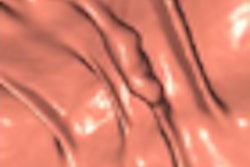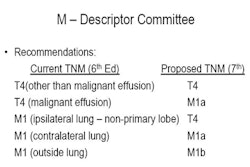Although the incidence of colorectal cancer is falling in the U.S. population as a whole, disease rates are rising among younger adults, according to a new study by the American Cancer Society (ACS).
Dr. Rebecca Siegel and colleagues from the ACS' Department of Surveillance and Health Policy Research in Atlanta theorized that rising rates of obesity and changing dietary patterns such as increased consumption of fast foods may underlie the higher disease rates in adults younger than 50, who are not routinely screened (Cancer Epidemiology Biomarkers & Prevention, June 2009, Vol. 18:6, pp. 1695-1698).
The researchers examined data from 13 Surveillance, Epidemiology, and End Results (SEER) cancer registries for average-risk adults beginning in 1992. They found that overall incidence rates of colorectal cancer (CRC) per 100,000 adults ages 20 to 49 increased 1.5% per year in men and 1.6% per year in women from 1992 to 2005.
Rates increased for both men and women among non-Hispanic whites for each 10-year grouping (20-29, 30-39, and 40-49 years) for the presence of colorectal cancer and for every stage of diagnosis.
"Notably, the largest annual percent increase in CRC incidence was in the youngest age group (20-29 years), by 5.2% per year in men and 5.6% per year in women," the authors wrote. "Analysis by anatomic subsite showed significant increases in cancers of the distal colon and rectum in both men and women."
CRC incidence rates among non-Hispanic whites substantially increased for left-sided tumors (distal and rectal) but not for right-sided tumors (proximal). The increased incidence among non-Hispanic whites was predominantly driven by rectal cancer, which rose 3.5% per year on average for men and 2.9% per year in women over the 13-year study period.
Fast food consumption in the U.S. increased fivefold among children and threefold among adults in the 1980s and 1990s, potentially leading to increased consumption of red meat and decreased dairy intake. Red meat consumption is associated with an increased risk of cancers of the distal colon and rectum, whereas milk and calcium consumption have shown a protective effect.
"The disparate increase in left-sided CRC suggests that particular attention be given to studies to elucidate the behavioral and environmental risk factors responsible for this trend and potential prevention and early detection strategies," Siegel and colleagues concluded.
Related Reading
Study: Cancer death rates drop in U.S., May 28, 2009
EU health chief says cancer screenings must double, January 23, 2009
Cancer rates and related deaths drop in U.S., November 26, 2008
High-fat dairy foods may reduce colorectal cancer risk, November 24, 2005
Caution: U.S.A. may be hazardous to your health, October 3, 2005
Copyright © 2009 AuntMinnie.com




















